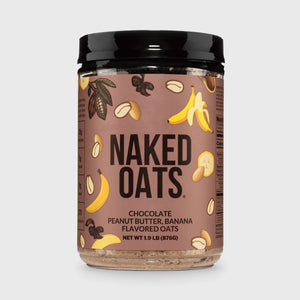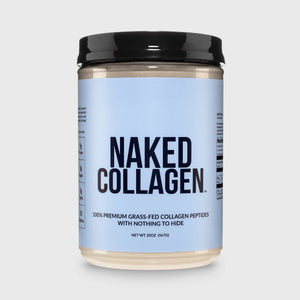Most people in the fitness and nutrition world know about BCAAs, or branched chain amino acid supplements. BCAAs are perhaps the third most popular workout supplement, behind whey protein and creatine.
But fewer know about supplementing with essential amino acids (EAAs). Thus, EAA supplements are not as popular in the fitness community. Though that may be about to change.
Read on to learn why you might want to start using EAAs instead of BCAAs, the difference between the two, and when to take EAAs to maximize their effectiveness.
EAAs vs BCAAs (Branched Chain Amino Acids): What's the Difference?

Each protein molecule in our body is made up of a number of smaller compounds, known as amino acids. While we talk about protein being vital for many bodily functions, from muscle growth and repair to energy production, certain amino acids actually do most of the work.
There are a total of 20 different amino acids. Some, the body produces naturally. But nine other amino acids are not produced by our body, and we can only get these and other essential amino acids needed by the body from external food sources.
The following are known as “essential” amino acids:
- Methionine
- Lysine
- Phenylalanine
- Threonine
- Tryptophan
- Leucine
- Isoleucine
- Valine
The rest are nonessential amino acids:
- Alanine
- Arginine
- Asparagine
- Aspartic acid
- Cysteine
- Glutamine
- Glutamic acid
- Glycine
- Proline
- Serine
- Tyrosine
You can find nonessential amino acids in supplement form, and they can be beneficial to take, but it’s less important to supplement these amino acids, because our body produces them already.
So that’s essential amino acids vs nonessential amino acids. What about EAAs vs BCAAs then?
BCAAs, or Branched Chain Amino Acids, are a collection of three essential amino acids: leucine, isoleucine and valine.
These three BCAAs are popular because their chemical structure allows them to be absorbed by the body very quickly, when taken together. They also head straight for the muscles, as opposed to being processed in the liver first, which is thought to be beneficial for pre and post-workout supplementation.
Got that? In the end, it’s very simple.
BCAAs are a subset of EAAs. All BCAAs are essential amino acids - but not all essential amino acids are BCAAs.
Are EAAs or BCAAs right for me?

The nutrition community is starting to move towards EAAs being a better option for supplementation than BCAAs.
As mentioned in the previous section, the thought was that BCAAs provided benefits for energy production and protein synthesis quicker and more effectively, because these specific amino acids could be grouped together and go straight to the muscles.
But some studies indicate that EAAs are more effective than BCAAs on their own. As per the study, the one amino acid that provides the most benefit for protein synthesis after resistance training is leucine (one of the three BCAAs). However, the body may require the other eight essential amino acids to support leucine’s effectiveness.
Research is still at an early stage on this topic, but it does appear that EAA supplementation is better than taking BCAAs.
When to Take EAAs for Maximum Benefits
EAAs can be taken before, during, or post-workout. Taking an EEA supplement around your workout session may assist in preventing delayed onset muscle soreness (DOMS), which result in soreness days after a workout.
You'll get the benefits of EAAs for muscle synthesis no matter whether you take them directly after the workout (when you need to support the body's muscle recovery, repair, and growth process), or take them ahead of time (i.e. before or during the workout).
EAAs can also provide more energy and fuel for your workout, which supports the case to take them pre-workout or during a workout. EAA supplements are not like a thick protein shake - you’ll usually mix them with water and get a light, virtually zero-calorie drink that is great for hydration as well as providing the benefits of amino acids.
Whenever you do take EAAs, try to take them in close proximity to your workout. While it’s not a bad thing to take EAAs at any time of the day, it’s best to have them readily available in your system as soon as muscle breakdown (and subsequently, muscle protein synthesis) happens.
Benefits of Supplementing with Essential Amino Acids

Let’s take a look at some of the top benefits of taking EAAs.
Exercise Performance
The main benefit of essential amino acids (including, but not limited to, BCAAs), is for improving performance in the gym and in other athletic activities.
These amino acids provide the muscles with additional fuel, which has been shown to reduce fatigue and increase short-term, active recovery.
Promotes Muscle Protein Synthesis
EAAs may also help prevent muscle loss, by providing the body with all it needs to support optimal muscle protein synthesis.
This is the process in which the body repairs and rebuilds damaged muscle fibers after a hard workout.
Prevents Muscle Loss
Without the necessary amino acids, muscle mass is in danger of degrading during this process. EAAs may help avoid that, and more, by delivering the compounds we need to regenerate and grow new muscle tissue.
May Support a Healthy Weight
A nice run-on effect of the body having enough amino acids for protein synthesis is that it shifts to burning fat for energy, instead of muscle.
This means they may help you maintain a healthy, lean physique.
Mood & Sleep
One of the essential amino acids is tryptophan. Tryptophan is known as a precursor to the neurotransmitter serotonin, which serves a number of purposes. Most notably, healthy levels of serotonin are correlated with better sleep, and low serotonin levels are thought to contribute to mood disorders such as depression and anxiety.
Don't I Already Get Essential Amino Acids from Food?
Yes, we do get essential amino acids from food. There are sufficient food sources for all of the nine essential amino acids, so you may get all you need from your diet already.
However, many of us don’t have a complete, balanced diet, with all the nutrients, vitamins, and amino acids we need. In addition, people who work out often, and at a high intensity, need higher levels of EAAs to maintain protein synthesis, so the regular levels we get from food may not be enough.
Do I Need to Supplement with EAAs?

You may not need to take an essential amino acid supplement. There's nothing in an EAA supplement that you can't get from a healthy diet. However, most people can benefit from taking EAA supplements, and there appear to be very few, if any, risks to essential amino acid supplementation.
They can work as a pre-workout, as hydration during your workout, or as a post-workout supplement to help preserve muscle mass and aid recovery. All of this with very few calories, and (if you choose the right product), little to no artificial additives.
If you already take BCAAs, switching to EAAs may provide your body with a more complete range of amino acids and more all-round benefits. And if you don’t, you might find your performance and recovery significantly improve, and your results with it.













